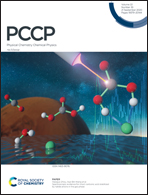Analysis of Judd–Ofelt parameters and radioluminescence results of SrNb2O6:Dy3+ phosphors synthesized via molten salt method
Abstract
In this work, Dy3+-doped SrNb2O6 phosphors were fabricated by the molten salt process, which avoids high sintering temperatures, prolonged reaction time and poor compositional homogeneity. All samples crystallized to the orthorhombic columbite structure with space group, P21/c, while a rod-like morphology was observed by scanning electron microscopy (SEM). PL (photoluminescence) and RL (radioluminescence) spectra of SrNb2O6:Dy3+ exhibited a strong blue emission peak at 576.0 nm related to 4F9/2 → 6H15/2 transition of Dy. The high RL emission of the 4F9/2 → 6H15/2 (electric dipole) transition upon X-ray-induced excitation led to a decrease in Dy3+ local environmental symmetry. The Judd–Ofelt (J–O) theory was applied to the PL excitation spectra for the calculation of optical data such as Ω2, Ω4, and Ω6 parameters, radiative transition probability (Ar), branching ratios (β, βexp) and stimulated emission cross-section (σe). The quantum efficiencies (ηQE) varied between 35.47 and 31.93%, which are compatible with theoretical quantum efficiencies based on the Einstein relation. The CIE chromaticity coordinates (x, y) and CCT (correlated color temperature) parameter for 3 mol% phosphor were defined (0.385, 0.432) and 4209 K, respectively.



 Please wait while we load your content...
Please wait while we load your content...